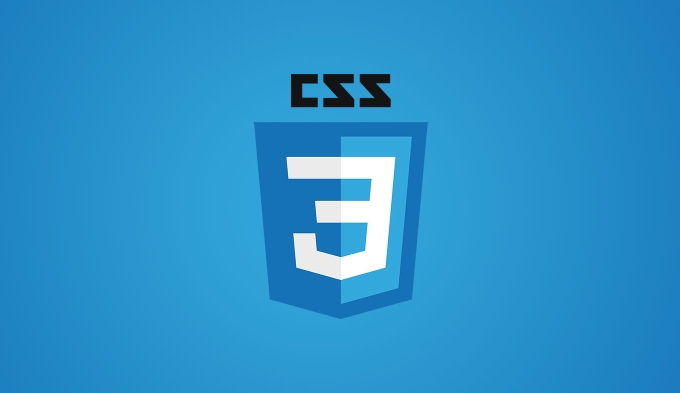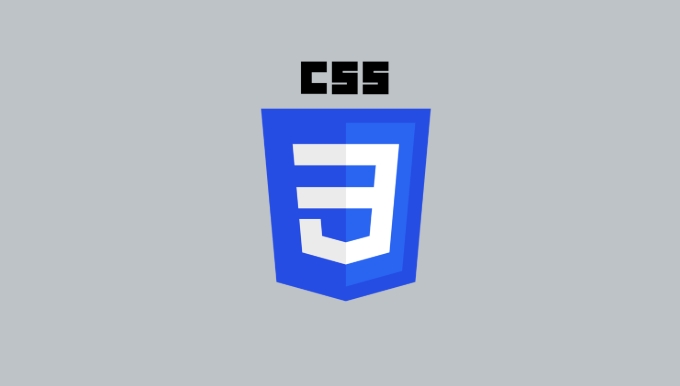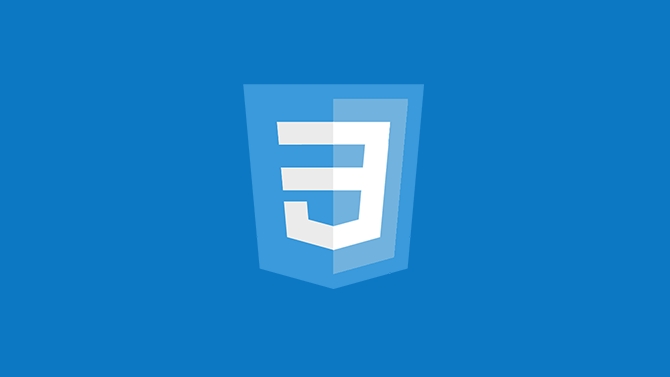 <p> The specificity of a CSS selector is a mechanism used by the browser to decide which style should be applied when multiple rules conflict. It is not determined by the simple "who writes it later and who takes effect", but calculates a weight value based on the composition structure of the selector.
<p> The specificity of a CSS selector is a mechanism used by the browser to decide which style should be applied when multiple rules conflict. It is not determined by the simple "who writes it later and who takes effect", but calculates a weight value based on the composition structure of the selector.

What is CSS specificity?
<p> Specificity can be understood as the "priority" of a CSS rule. When multiple rules match the same element and the same attribute is set, the browser will compare their specificity and select the "strongest" rule to apply. <p> for example:
<p> for example: p {
color: red;
}
#main p {
color: blue;
}<p> If the <p> element is in a container with id="main" , then the second rule has a higher specificity and the text color will be blue. 
How is specificity calculated?
<p> Specificity is a four-digit number consisting of four different types of counts (usually written as a, b, c, d):- a : The number of inline styles (such as
style="max-width:90%") - b : The number of ID selectors (such as
#header) - c : The number of class selectors, attribute selectors and pseudo-classes (such as
.class,[type="text"],:hover) - d : the number of element selectors and pseudo-elements (such as
div,::before)
For example:
| Selector | a | b | c | d | Specific values |
|---|---|---|---|---|---|
p | 0 | 0 | 0 | 1 | (0,0,0,1) |
p.error | 0 | 0 | 1 | 1 | (0,0,1,1) |
#main p | 0 | 1 | 0 | 1 | (0,1,0,1) |
style="color:red" | 1 | 0 | 0 | 0 | (1,0,0,0) |
Common misunderstandings and suggestions
<p> Many people think that using multiple classes can exceed the ID, but in fact it doesn't work. For example: #main {}
.container.sidebar.highlight {}<p> The former has only one ID, and the latter has three classes, but the weight of the ID is much higher than that of the class, so the specificity of #main is still higher.
Some practical suggestions:
- Try to avoid using IDs to set styles, because they are too "strong" and easily make the style difficult to overwrite.
- Using class name combinations is easier to control hierarchy and is more conducive to reuse.
- If you find that a certain style cannot be covered, it may be because its specificity is too high, so you can use the browser developer tools to check it.
- Although
!importantcan be used forcibly overridden, it should be used as little as possible because it will make debugging more difficult.
Let's summarize
<p> The specificity calculation is not complicated, but it is based on the "component analysis" of the selector structure, rather than a simple numerical summation. Understanding this mechanism can help you write clearer and more controllable CSS, and reduce unnecessary!important and duplicate code.
<p> Basically that's it.The above is the detailed content of How is specificity calculated for CSS Selectors?. For more information, please follow other related articles on the PHP Chinese website!

Hot AI Tools

Undress AI Tool
Undress images for free

Undresser.AI Undress
AI-powered app for creating realistic nude photos

AI Clothes Remover
Online AI tool for removing clothes from photos.

Clothoff.io
AI clothes remover

Video Face Swap
Swap faces in any video effortlessly with our completely free AI face swap tool!

Hot Article

Hot Tools

Notepad++7.3.1
Easy-to-use and free code editor

SublimeText3 Chinese version
Chinese version, very easy to use

Zend Studio 13.0.1
Powerful PHP integrated development environment

Dreamweaver CS6
Visual web development tools

SublimeText3 Mac version
God-level code editing software (SublimeText3)

Hot Topics
 What is 'render-blocking CSS'?
Jun 24, 2025 am 12:42 AM
What is 'render-blocking CSS'?
Jun 24, 2025 am 12:42 AM
CSS blocks page rendering because browsers view inline and external CSS as key resources by default, especially with imported stylesheets, header large amounts of inline CSS, and unoptimized media query styles. 1. Extract critical CSS and embed it into HTML; 2. Delay loading non-critical CSS through JavaScript; 3. Use media attributes to optimize loading such as print styles; 4. Compress and merge CSS to reduce requests. It is recommended to use tools to extract key CSS, combine rel="preload" asynchronous loading, and use media delayed loading reasonably to avoid excessive splitting and complex script control.
 How to use Lotties in Figma
Jun 14, 2025 am 10:17 AM
How to use Lotties in Figma
Jun 14, 2025 am 10:17 AM
In the following tutorial, I will show you how to create Lottie animations in Figma. We'll use two colorful designs to exmplify how you can animate in Figma, and then I'll show you how to go from Figma to Lottie animations. All you need is a free Fig
 Breaking Boundaries: Building a Tangram Puzzle With (S)CSS
Jun 13, 2025 am 11:33 AM
Breaking Boundaries: Building a Tangram Puzzle With (S)CSS
Jun 13, 2025 am 11:33 AM
We put it to the test and it turns out Sass can replace JavaScript, at least when it comes to low-level logic and puzzle behavior. With nothing but maps, mixins, functions, and a whole lot of math, we managed to bring our Tangram puzzle to life, no J
 External vs. Internal CSS: What's the Best Approach?
Jun 20, 2025 am 12:45 AM
External vs. Internal CSS: What's the Best Approach?
Jun 20, 2025 am 12:45 AM
ThebestapproachforCSSdependsontheproject'sspecificneeds.Forlargerprojects,externalCSSisbetterduetomaintainabilityandreusability;forsmallerprojectsorsingle-pageapplications,internalCSSmightbemoresuitable.It'scrucialtobalanceprojectsize,performanceneed
 Does my CSS must be on lower case?
Jun 19, 2025 am 12:29 AM
Does my CSS must be on lower case?
Jun 19, 2025 am 12:29 AM
No,CSSdoesnothavetobeinlowercase.However,usinglowercaseisrecommendedfor:1)Consistencyandreadability,2)Avoidingerrorsinrelatedtechnologies,3)Potentialperformancebenefits,and4)Improvedcollaborationwithinteams.
 CSS Case Sensitivity: Understanding What Matters
Jun 20, 2025 am 12:09 AM
CSS Case Sensitivity: Understanding What Matters
Jun 20, 2025 am 12:09 AM
CSSismostlycase-insensitive,butURLsandfontfamilynamesarecase-sensitive.1)Propertiesandvalueslikecolor:red;arenotcase-sensitive.2)URLsmustmatchtheserver'scase,e.g.,/images/Logo.png.3)Fontfamilynameslike'OpenSans'mustbeexact.
 CSS Counters: A Step-by-Step Tutorial with Examples
Jun 12, 2025 am 10:31 AM
CSS Counters: A Step-by-Step Tutorial with Examples
Jun 12, 2025 am 10:31 AM
CSSCounters is a tool for creating automatic numbers. 1. Basic usage: define and operate counters through counter-reset and counter-increment, such as "SectionX." before h2. 2. Advanced usage: Use nested counters to create complex numbers, such as chapter and section numbers. 3. Notes: Ensure the counter is reset correctly, optimize performance, and simplify counter logic. 4. Best practice: clear naming, define counters in CSS, and use counter-increment and counter-reset reasonably.
 What is Autoprefixer and how does it work?
Jul 02, 2025 am 01:15 AM
What is Autoprefixer and how does it work?
Jul 02, 2025 am 01:15 AM
Autoprefixer is a tool that automatically adds vendor prefixes to CSS attributes based on the target browser scope. 1. It solves the problem of manually maintaining prefixes with errors; 2. Work through the PostCSS plug-in form, parse CSS, analyze attributes that need to be prefixed, and generate code according to configuration; 3. The usage steps include installing plug-ins, setting browserslist, and enabling them in the build process; 4. Notes include not manually adding prefixes, keeping configuration updates, prefixes not all attributes, and it is recommended to use them with the preprocessor.






